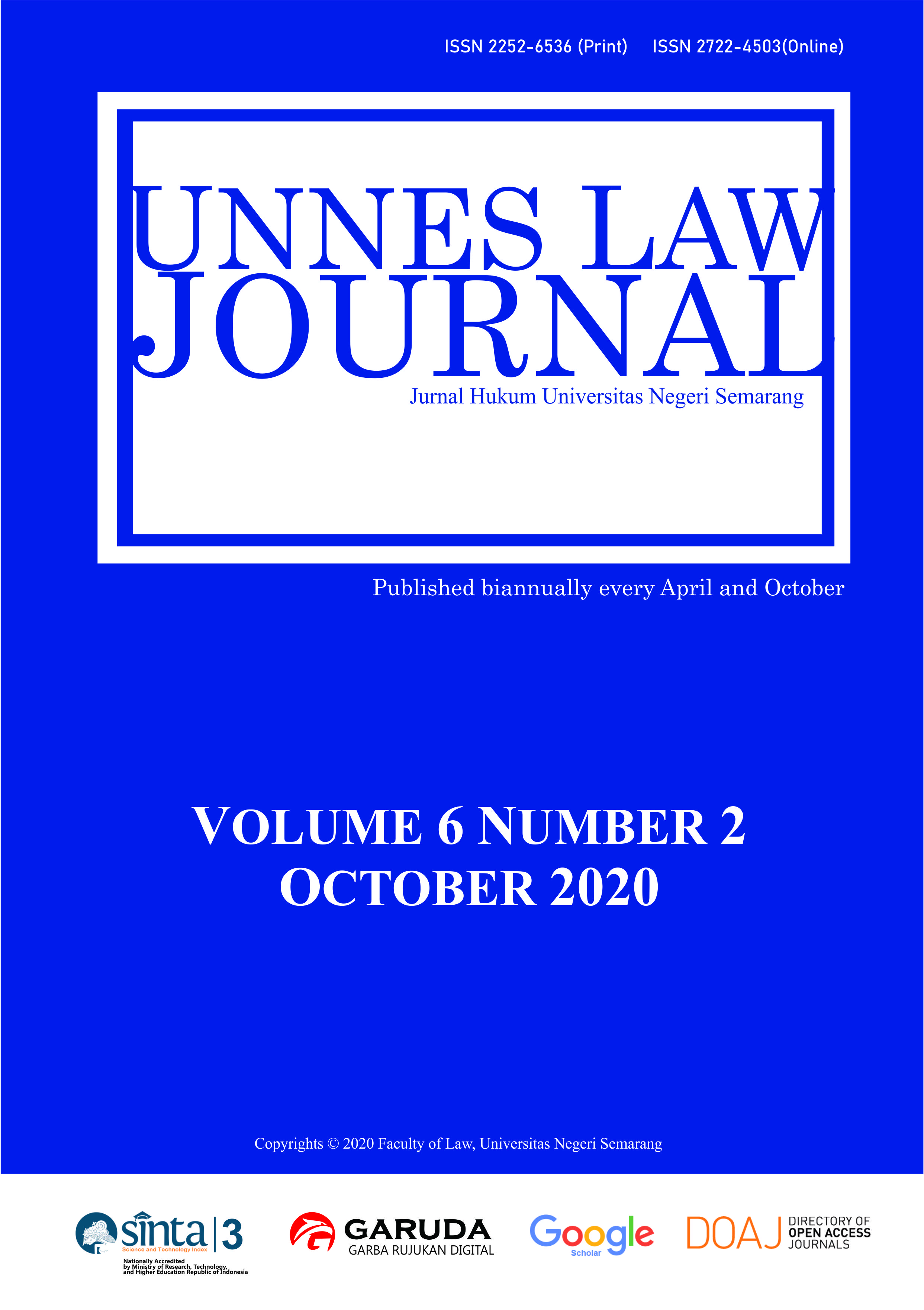Understanding Geospatial Intelligence and the Challenges of Effective Counter-Terrorism Strategy: A Case Study of Nigeria's Boko Haram Challenge Security Law, Counter-Terrorism Law
Main Article Content
Abstract
Nigeria is faced with a number of security challenges that have threatened the existence of peace and security in the country. These threats to public safety and national security have greatly undermined the government primary responsibility of guaranteeing public safety and national security. The intractable challenges posed by Boko Haram makes a good case for the above assertion. This work, therefore reviews the applicability of Geospatial Intelligence and all its components and sub-field, with a view to understanding and or establishing their respective relevance in devising effective counter-terrorism strategies in Nigeria. This was done, taking Boko Haram activities between 2015 and 2018 for specific study, against the background of Geospatial Intelligence capabilities .The researchers utilised primary and secondary data sources in this work. The Primary data sources was from questionnaires administered physically and electronically via emails while Secondary data came from published books, journals, articles, lecture guides, videos etc. Acquired data was statistically analysed using simple percentage and Chi-Square statistics. Sequel to the statistical results, findings were made that Geospatial-Intelligence is relevant and remains the most potent frontier in developing effective counter-terrorism strategies against Boko Haram and indeed other similar insurgencies in Nigeria.
Article Details
References
ArcGIS 9 Software Manual (2006). Environmental Systems Research Institute (ESRI), Redlands, USA. www.esri.com
Bacastow, T., & Bellafiore, D. (2009). Redefining Geospatial Intelligence. American Intelligence Journal, 27(1), 38-40. Retrieved January 15, 2020, from http://www.jstor.org/stable/44327109
Carinemahy, C. (2011). Mosaic Painting History. Ancient History Encyclopedia, http://www.ancient.eu
Central Intelligence Agency (2003). National Strategy for Combating Terrorism. United States: http://www.cia.gov
Cooperative Institute for Meteorological Satellite Studies (2016). Satellite and Imagery. http://www.cimss.ssec.wisc.edu
Chukwu, C., & Azuka C. (2014). Simplifying Bs.c Project Writing for Undergraduates. Lagos, Serenity Publishers ISBN 978-978-950-979-9.
Chukwu, C. (2014). The Fundamentals of Sociology; An Introduction. Lagos: Serenity Publishers ISBN 978-978-077-305-2.
Daniel, N (2016). Terrorism and Counter Terrorism Lecture. Novena University Ogume, Delta State.
Daniel, L. (1997). Kerlinger's Research Myths: An Overview with Implications for Educational Researchers. The Journal of Experimental Education, 65(2), 101-112. Retrieved January 5, 2020, from http://www.jstor.org/stable/20152511
David, E. (2005). The Mosaic Theory, National Security, and the Freedom of Information Act. The Yale Law Journal.
Department of Defense Directive 5105.60: (1996). United States: http://www.biotech.law.lsu.edu
Descombe, M (1998). The Good Research Guide. http://www.researchgate.net
Ekpenyong, N. (2012). Introduction to Intelligence and Security Studies. Port Harcourt: University of Port Harcourt Press.
European Union Framework Decision on combatting terrorism (2002). Official Journal of the European Union. http://www.data.europa.eu/eli/dec_framw/2008/919/oj
Franklin, A (2014). Digital Mapping for Security. Port Harcourt: Security Corpus Prints and Partners.
Garret, S (2015). Google Earth Imagery. http://www.quora.com
Joint Publication 1-02 (2001). DoD Dictionary of Military and Associated Terms, as amended through 20 March 2006.
Joint Publication 2-01 (2004). Joint and National Intelligence Support to Military Operations. United states Department of State.
Joint Publication 2-03 (2006), Geospatial Intelligence Support to Joint Operations. United states Department of State.
Kerlinger, Fred N. (1973) Foundations of Behavioral Research. 2nd edition. Holt, Rinehart and Winston
Kerlinger, F. N. (1986). Foundations of Behavioral research (3rd ed.). Fort Worth, TX: Holt, Rinehart and Winston.
Legere, M (2013). Introduction to Geospatial-Intelligence. http://www.tubidy.com
Luana, V (2011). Google Earth–An Introduction. http://www.geomatica.como.polimi.it
Marine Corps’ Generic Intelligence Requirements Handbook (GIRH): (2002). United States: www.fas.org
Mathew, D (2010). ArcGis 10 transforms the way people use GIS. Redlands, California. http://www.esri.com
Michael, N (2009). GIS for Dummies. Indianapolis Indiana: Wiley Publishing inc.
NASA (2017). Landsat Science, Landsat 8 overview. http://www.landsat.gsfc.nasa.gov
National Geospatial Intelligence Agency (NGA) (2006). National system for geospatial Intelligence. Publication 1-0 : http://www.nga.mil
Patenaude, G (2017). Introduction to remote sensing. Retrieved from [email protected]
Ratcliffe, J (2009). Intelligence-led Policing. The Howard Journal of Crime and Justice: http://www.onlinelibrary.wiley.com
Rex, A (1999). The Sociology and Psychology of Terrorism. Washington D.C: Federal Research Division Library of Congress. http://www.loc.gov/rr/frd/
Richards J. (1999). Psychology of Intelligence Analysis. Center for the study of Intelligence Central Intelligence Agency, United States.
Rossmo, K (2017). Geotime Provides a powerful method of visualizing spatial-temporal data. Texas: Center for Geospatial Intelligence and Investigation, Texas State University. http://www.uncharted.software
Samarakoon, L (2017). Introduction to Remote sensing. Geoinformatics Center, http://www.star.ait.th
UNODA (2015). Study on Armed Unmanned Aerial Vehicles. United Nations Office for Disarmament Affairs http://www.un.org
US Marine Corps (2014). Marine Corps Warfighting & Reference Publication 2-12.1, Geographic Intelligence. http://www.doctrine.usmc.mil
Wikipedia (2017). Definition of Maps and Cartography. http://www.wikipedia.com
Wikipedia (2017). Geospatial Intelligence Operating systems. http://www.wikipedia.com
Wikipedia (2017). Global Positioning System (GPS). http://www.wikipedia.com
Wikipedia (2017). Laser Range Finders. http://www.wikipedia.com
Wikipedia (2017). Geotime GEOINT Application. http://www.wikipedia.com
Zems, M (2013). Understanding Crime; Analysis for Intelligence, Investigation and Security. China: Guangzhou Quick Printing Co. Ltd ISBN 978-978-933-341-
